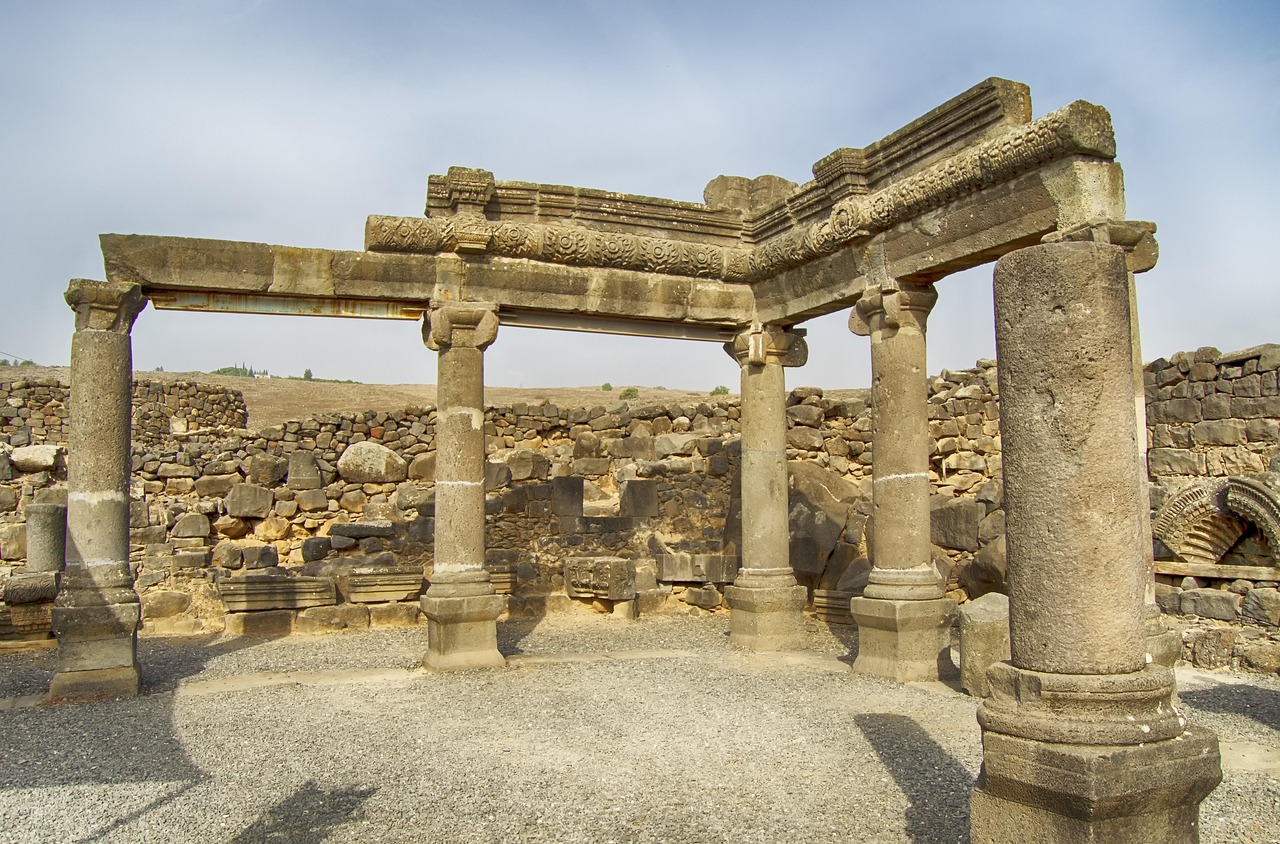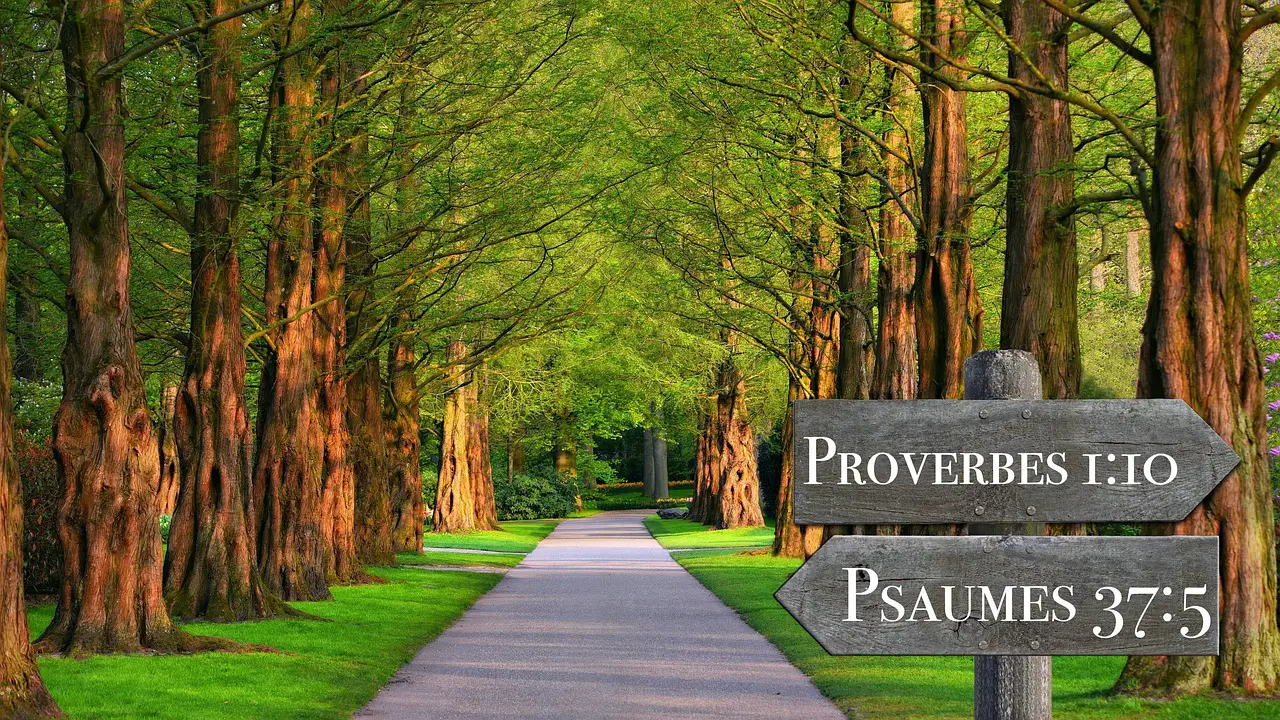Trees in the Bible symbolize strength, stability, and life. They represent God’s creation, provide spiritual lessons, and serve as metaphors for human growth and divine blessings.
The Significance of Trees in Biblical Texts
Trees hold a significant place in the Bible, appearing in numerous scriptures throughout both the Old and New Testaments. Their imagery often conveys profound spiritual truths. From the creation story in Genesis to the descriptions of paradise in Revelation, trees are woven into the fabric of biblical narratives.

In ancient times, trees were more than just elements of nature; they were vital for survival. They provided food, shelter, and materials for building. This connection to life and sustenance is reflected in their spiritual symbolism. For instance, the fruit of trees is frequently used to illustrate moral lessons and divine rewards.
<h3Key Biblical Trees
Several trees are specifically mentioned in the Bible, each carrying its unique meaning and significance. The following table highlights some key trees and their symbolic meanings:
| Tree | Biblical Reference | Symbolism |
|---|---|---|
| Tree of Life | Genesis 2:9; Revelation 22:2 | Eternal life, divine sustenance |
| Tree of Knowledge of Good and Evil | Genesis 2:17 | Moral choice, temptation |
| Fig Tree | Mark 11:13; Luke 13:6-9 | Israel’s spiritual condition, fruitfulness |
| Cedars of Lebanon | Psalms 92:12; 1 Kings 6:15 | Strength, majesty |
| Olive Tree | Romans 11:24 | Peace, prosperity, God’s covenant |
The Tree of Life is one of the most profound symbols found in the Bible. It signifies eternal life and divine provision. In Genesis, it is placed in the Garden of Eden as part of God’s perfect creation. Conversely, the Tree of Knowledge of Good and Evil represents the moral choices humanity faces, highlighting the consequences of disobedience.

The fig tree is another important biblical symbol. Jesus used the fig tree to convey messages about fruitfulness and spiritual barrenness. When he cursed a barren fig tree, it illustrated the importance of bearing good fruit in one’s life.
Trees as Metaphors in Scripture
Trees are often used as metaphors for people and nations in the Bible. For example, in Psalms 1:3, a righteous person is compared to a tree planted by streams of water. This image emphasizes stability and nourishment from God’s word. Such metaphors illustrate how individuals can thrive through a relationship with the divine.
Moreover, trees signify God’s presence and provision. In the book of Isaiah, trees are depicted as symbols of healing and restoration. The imagery reinforces the idea that God provides shelter and comfort amid life’s storms.

The Role of Trees in Parables
Trees frequently appear in parables told by Jesus. These stories use trees to convey deeper spiritual truths. For instance, in Matthew 7:17-20, Jesus teaches about recognizing true followers by their fruits. This comparison emphasizes the importance of actions reflecting one’s faith.
Additionally, in Luke 13:18-19, Jesus compares the kingdom of God to a mustard seed that grows into a large tree. This illustrates how something small can develop into something significant through God’s work.
Through these examples, trees serve as powerful symbols throughout biblical texts. They represent not only physical sustenance but also spiritual life and growth. The various trees mentioned illustrate God’s creation and His desire for humanity to flourish in faith and obedience.
The Symbolism of Trees in Worship and Rituals
Trees have also played an essential role in worship and rituals throughout biblical history. The presence of trees in sacred spaces often signified a connection between the divine and humanity. They were not only physical entities but also held spiritual importance as symbols of God’s presence.

In ancient Israel, trees were often associated with altars and places of worship. They provided shade and beauty, creating a serene environment for prayer and sacrifice. Many biblical figures, such as Abraham, are noted for building altars near significant trees, emphasizing their role in spiritual practices.
Trees in Key Biblical Events
Several significant events in the Bible involve trees, highlighting their importance in God’s plan. Below is a list of some pivotal moments where trees play a significant role:
- The Garden of Eden: This paradise featured the Tree of Life and the Tree of Knowledge of Good and Evil, which were central to the story of creation and the fall of man.
- Moses and the Burning Bush: While not a traditional tree, the bush that burned without being consumed symbolized God’s presence and calling for Moses.
- David’s Anointing: When David was anointed king, it took place near trees, symbolizing his connection to God’s covenant with Israel.
- The Cross: In the New Testament, Jesus was crucified on a wooden cross, often referred to as a “tree” in scripture, signifying sacrifice and redemption.
Cultural Significance of Trees
Trees also reflect the cultural and societal values of biblical times. They served practical purposes while embodying deeper meanings within the community. For many ancient cultures, trees represented life, fertility, and stability.
In Israelite culture, olive trees were especially significant. They provided olive oil, which was used for anointing, cooking, and lighting lamps. The olive branch itself became a symbol of peace and reconciliation. This cultural significance is evident in various biblical passages where olives and olive trees are mentioned.
The Olive Tree in Detail
The olive tree is often used metaphorically to describe Israel as God’s chosen people. In Romans 11:17-24, Paul refers to wild olive branches being grafted into the cultivated olive tree, representing Gentiles being included in God’s promises. This powerful imagery underscores God’s desire for all people to partake in His blessings.
| Tree Type | Significance | Biblical Reference |
|---|---|---|
| Olive Tree | Symbol of peace and God’s covenant | Romans 11:17-24 |
| Palm Tree | Victory and triumph | Psalms 92:12; John 12:13 |
| Cypress Tree | Strength and durability | Isaiah 41:19 |
| Oak Tree | Endurance and stability | Isaiah 61:3 |
Palm trees are another significant symbol in biblical texts. They represent victory and triumph, often associated with celebrations. For example, during Jesus’ triumphant entry into Jerusalem, palm branches were laid on the ground as a sign of honor (John 12:13). This event illustrates how trees are used to express joy and reverence in worship.
The Role of Trees in Prophecy
Trees also appear prominently in biblical prophecy. They often symbolize nations or peoples in scripture. For instance, in Ezekiel 17:22-24, God uses the imagery of a cedar tree to describe His plans for Israel’s restoration. The metaphor emphasizes growth and renewal through divine intervention.
Furthermore, prophetic literature frequently uses trees to communicate themes of judgment and righteousness. In Jeremiah 17:7-8, the righteous are compared to a tree planted by water, thriving even in difficult conditions. This imagery serves as a reminder of God’s faithfulness to those who trust in Him.
Through these various examples, it becomes clear that trees carry profound meanings within biblical texts. Their roles span from symbols of sustenance to representations of spiritual truths. The multifaceted nature of trees reflects God’s intricate design in creation and His ongoing relationship with humanity.
The Role of Trees in Biblical Poetry and Literature
Trees frequently appear in biblical poetry and literature, enriching the text with their imagery and symbolism. Poets and authors in the Bible often utilized trees to evoke emotions and convey deeper spiritual truths. Their presence can be found in Psalms, Proverbs, and other poetic books, where they serve as metaphors for various human experiences.
Trees in the Book of Psalms
The Book of Psalms is rich with references to trees, often symbolizing strength, stability, and beauty. The imagery of trees helps communicate themes of trust, growth, and divine protection. Here are some notable examples:
- Psalms 1:3: “He is like a tree planted by streams of water, which yields its fruit in season.” This verse emphasizes the blessings of living a righteous life.
- Psalms 92:12: “The righteous will flourish like a palm tree.” This imagery highlights resilience and growth even in adversity.
- Psalms 104:16: “The trees of the Lord are well watered.” This reflects God’s provision for all creation and His care for the natural world.
These verses illustrate how trees symbolize the flourishing life that comes from a close relationship with God. They also convey the message that those who trust in Him will find strength and nourishment.
Metaphorical Use of Trees in Proverbs
The Book of Proverbs also employs tree imagery to impart wisdom and moral lessons. Trees serve as metaphors for various virtues and the consequences of one’s actions. Some examples include:
- Proverbs 3:18: “She is a tree of life to those who take hold of her.” This verse refers to wisdom as a source of life and fulfillment.
- Proverbs 11:30: “The fruit of the righteous is a tree of life.” This illustrates how righteous actions can lead to blessings for others.
In these instances, trees symbolize wisdom, righteousness, and the impact of one’s choices on others. The metaphor of trees serves to remind readers of the importance of living a virtuous life.
Theological Implications of Trees
The theological implications of trees extend beyond their physical representation. They symbolize God’s creative power, His providence, and His covenant with humanity. Trees are integral to understanding God’s relationship with His creation.
Covenant Symbolism
Trees often symbolize God’s covenants throughout scripture. The olive tree, for example, represents peace and reconciliation, while the fig tree can symbolize judgment or lack of fruitfulness. The use of trees in these contexts highlights God’s ongoing commitment to His people.
A notable example is found in Jeremiah 11:16, where God compares Israel to a green olive tree. This metaphor signifies both God’s love for His people and His expectations for their faithfulness. The imagery emphasizes that God desires His people to thrive and fulfill their purpose.
Trees and Redemption
In Christian theology, trees also play a crucial role in the narrative of redemption. The cross, which is made from wood, serves as a powerful symbol of Christ’s sacrifice. In Galatians 3:13, Paul states that Christ was made a curse for us by hanging on a tree. This profound connection between trees and redemption underscores the significance of Jesus’ death and resurrection.
Symbolism in Revelation
The Book of Revelation further develops the theme of trees in the context of eternal life and restoration. In Revelation 22:2, the Tree of Life reappears, bearing fruit each month and offering healing to the nations. This imagery signifies God’s ultimate plan for humanity’s restoration through Christ.
| Tree Symbol | Theological Meaning | Biblical Reference |
|---|---|---|
| Tree of Life | Eternal life and divine provision | Revelation 22:2; Genesis 2:9 |
| Fig Tree | Judgment for barrenness | Mark 11:13-14 |
| Cedars of Lebanon | Strength in God’s kingdom | Psalms 92:12; Isaiah 60:13 |
| Olive Tree | Covenant relationship with God | Romans 11:24 |
This rich tapestry of tree symbolism throughout biblical literature offers insights into God’s character, His promises, and His plans for humanity. The imagery of trees invites readers to reflect on their own spiritual journeys and their relationship with the Creator.
As we explore the multifaceted meanings of trees in the Bible, it becomes clear that they serve as vital symbols of spiritual truths, life, and God’s relationship with humanity. Beyond their physical presence, trees embody profound concepts such as growth, sustenance, and divine promise. Each tree mentioned in scripture offers a unique insight into God’s character and His ongoing covenant with His people.
The imagery of trees provides a lens through which believers can understand their faith. For instance, the Tree of Life represents eternal life and divine provision, reminding individuals of the hope that lies in a relationship with God. Similarly, the olive tree symbolizes peace and the enduring covenant between God and His people, illustrating the depth of His love and commitment.
The Ecological and Spiritual Interconnectedness of Trees
In addition to their theological significance, trees also highlight the interconnectedness of creation. They provide essential resources such as oxygen, food, and shelter, playing a crucial role in the Earth’s ecosystem. The Bible emphasizes God’s creation as “very good,” indicating that all aspects of nature, including trees, are part of His divine plan.
This connection invites believers to consider their role in caring for God’s creation. Just as trees thrive when they are nurtured, so too can communities flourish when they respect and protect the environment. The teachings of stewardship in scripture encourage individuals to uphold their responsibility toward nature, reflecting God’s care for all living things.
The Lessons Trees Teach Us
Additionally, trees symbolize various life lessons that can inspire personal growth and spiritual maturity. Here are some key lessons that trees impart:
- Resilience: Trees withstand storms and harsh conditions, teaching us to remain steadfast in our faith despite challenges.
- Growth: Trees grow steadily over time, reminding us that spiritual growth often requires patience and perseverance.
- Fruitfulness: Just as healthy trees bear fruit, believers are called to produce good works and share the love of God with others.
- Rootedness: Trees with deep roots are more stable; similarly, a strong foundation in faith leads to a resilient and fruitful life.
These lessons encourage individuals to reflect on their spiritual journeys and consider how they can embody these values in their lives. By learning from the symbolism of trees, believers can cultivate a deeper understanding of their faith and its impact on themselves and others.
Final Thoughts
The biblical meaning of trees is deeply woven into the narrative of Scripture. From the Garden of Eden to the promises found in Revelation, trees symbolize life, growth, judgment, and hope. They serve as reminders of God’s providence and His desire for humanity to thrive both spiritually and physically.
Throughout this exploration, it is evident that trees are more than mere elements of nature; they are rich with spiritual significance that can guide believers in their faith. Understanding the symbolism of trees encourages a greater appreciation for God’s creation and His eternal promises. As individuals reflect on these sacred symbols, they are invited to deepen their relationship with God and embrace their role within His creation.
Ultimately, the lessons drawn from trees resonate with timeless truths that can inspire generations. By embodying the qualities represented by trees—strength, resilience, and fruitfulness—believers can contribute positively to their communities and honor God’s design for life.
